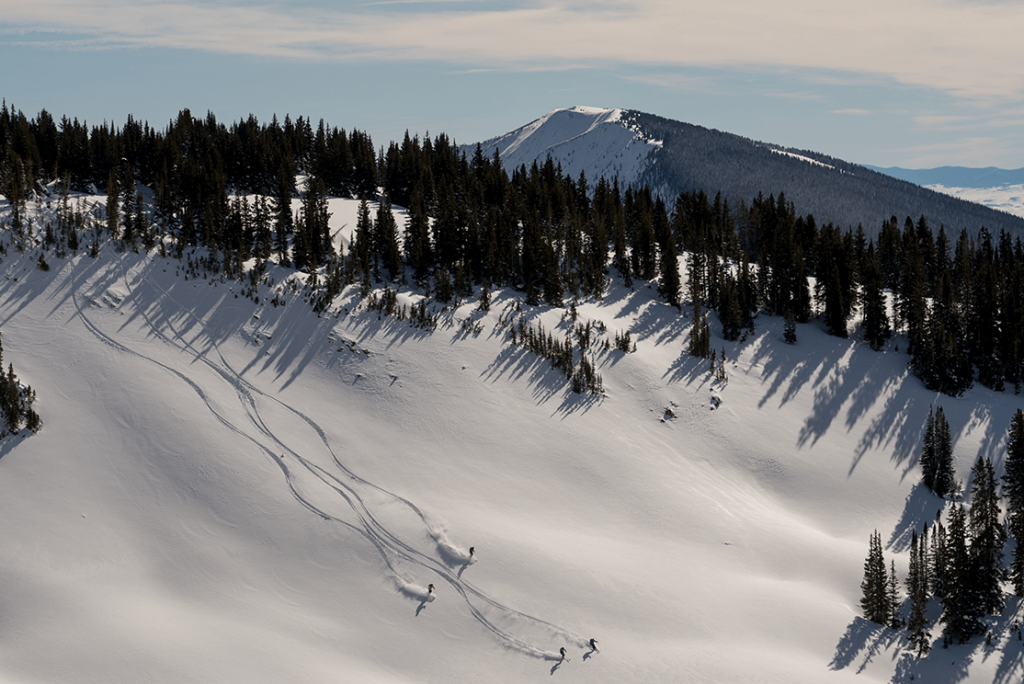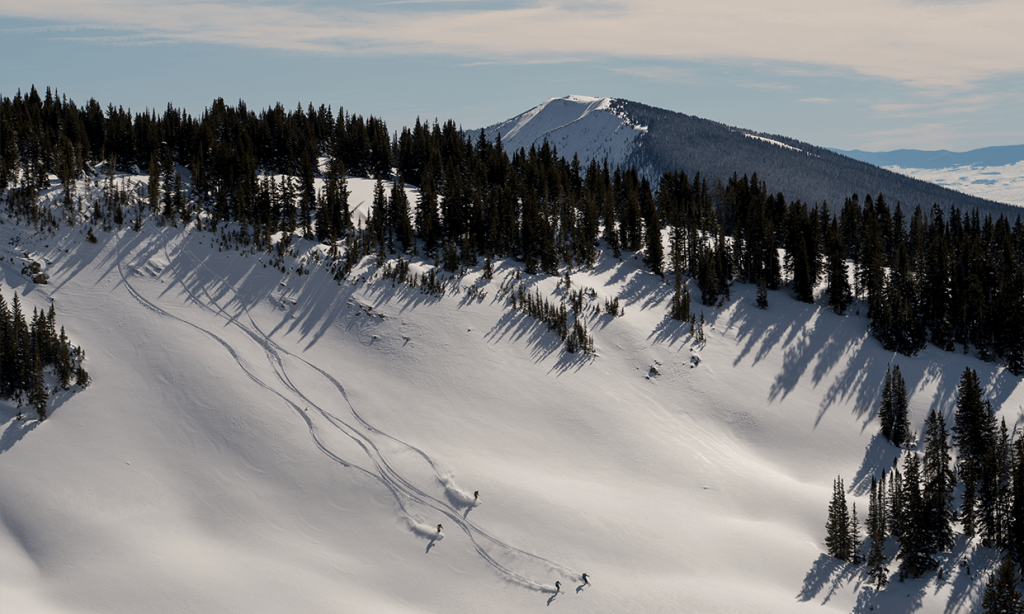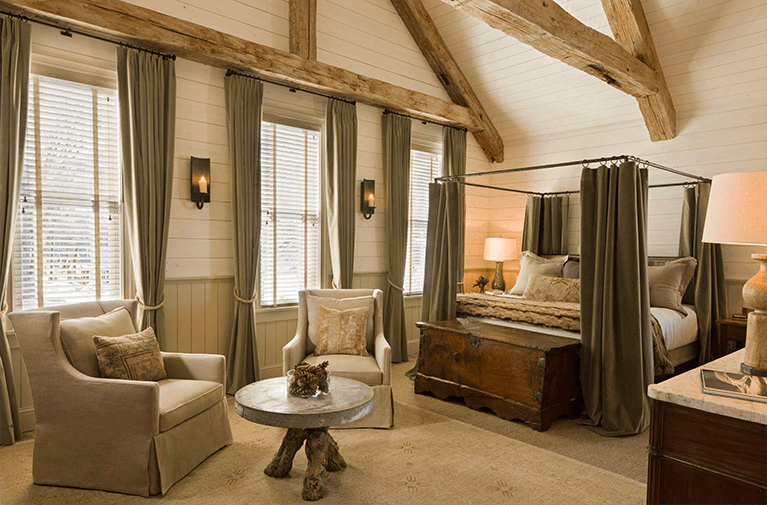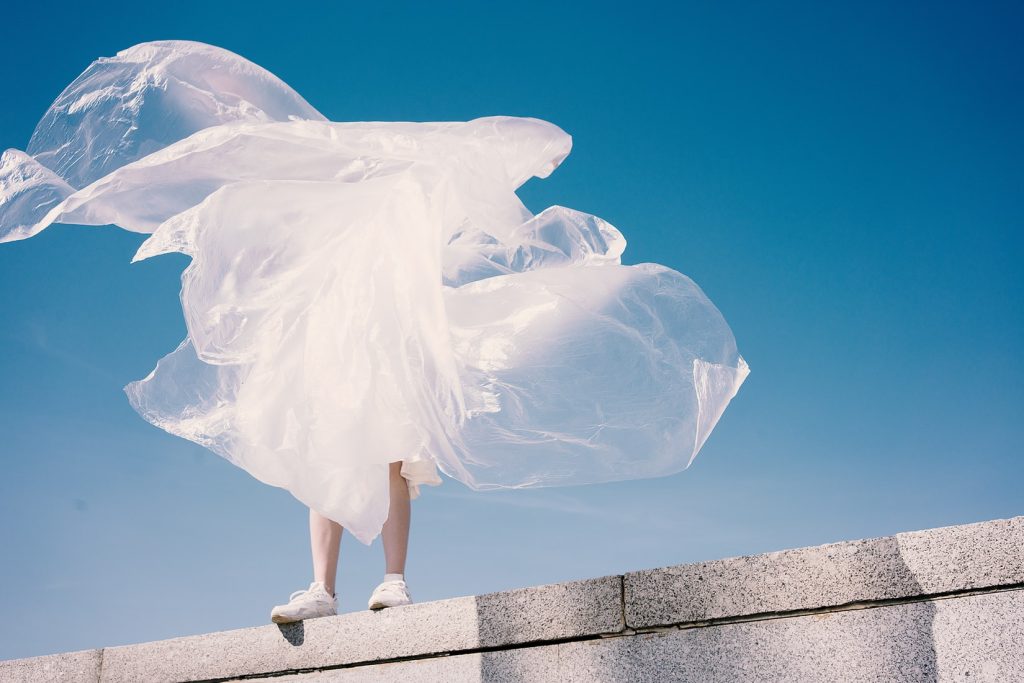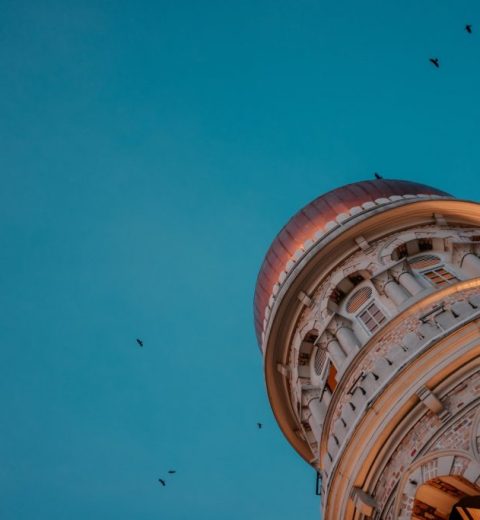No crowds, no lines. No vista dotted with chairlift towers and snow plowers. Just the whip of wind that’s requisite at 10,000 feet and a survey below of 1,000 glistening acres of powder—a mix of chutes, tight tree runs, and open bowls, most directly on the fall line. Which means that when you point your skis down, you don’t need to fight the hill to stay straight. When you tighten your boot buckles, strap on your skis, and go, you want to go without stopping, if only because when you stand at the bottom of the run and look up at the path you’ve cut above, it’s likely one of the only times in your life you’ll see your tracks intact, completely undisturbed by other skiers. Such is the life of a cat skier.
I was a competitive mogul skier growing up—during the season, I spent three days a week on the mountain (my hippie school went to the ski area every Wednesday afternoon in the winter), as well as my entire Christmas break. The sport was, more or less, my life, with ski camps in the summer, dryland training, and thinking about skiing all fall, including watching all the requisite Warren Miller movies to get extra psyched up. When I wasn’t training with my team, I would ski by myself or with a gang of guy friends or, if the chair gods aligned, with my dad. Every winter, my dad would go up north to the Selkirk Mountains in Canada for a week of cat skiing with his friends. He promised that when I was a verified adult—i.e., old enough to appreciate the experience and never forget it—he would take me with him. But as luck would have it, he took a wrong turn up there, went off a small cliff, and set off an avalanche. He had to be long-lined out by helicopter without his skis—that was the end of his cat skiing career.

